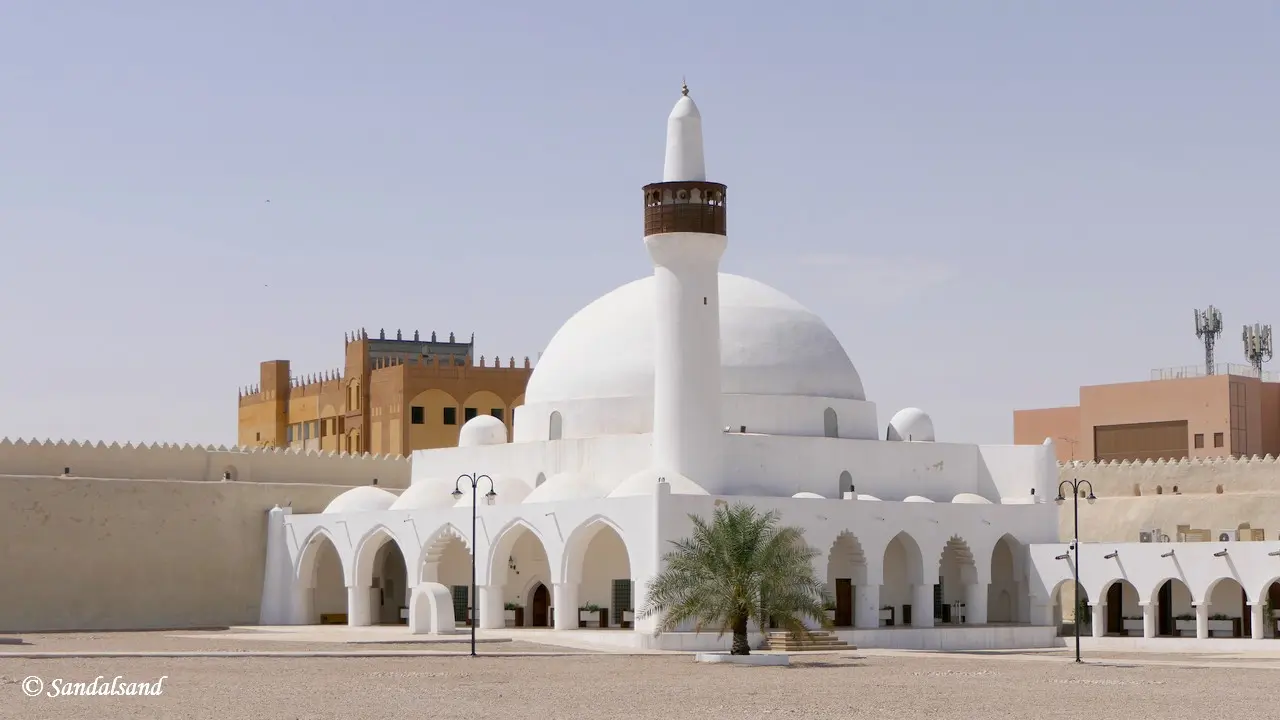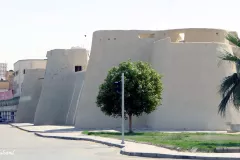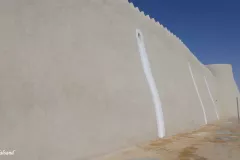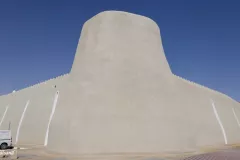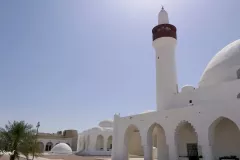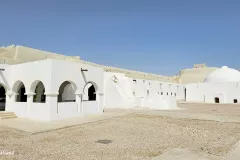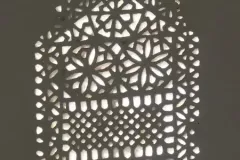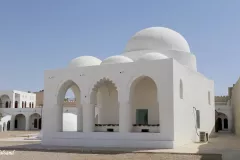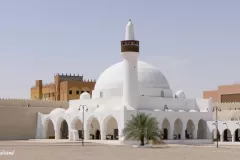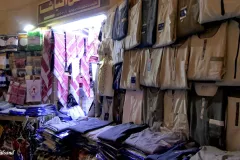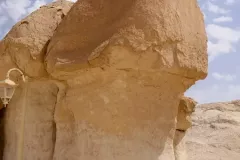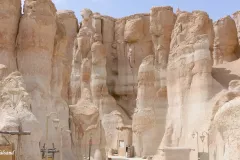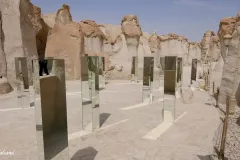The Al-Ahsa Oasis in Saudi Arabia is the world’s largest oasis with 2.5 million date palms. And there is much more to discover as well.
The UNESCO World Heritage List includes over a thousand properties. They have outstanding universal value and are all part of the world’s cultural and natural heritage.
Official facts
- Official title: Al-Ahsa Oasis, an Evolving Cultural Landscape
- Country: Saudi Arabia
- Date of Inscription: 2018
- Category: Cultural
UNESCO’s World Heritage Centre’s short description of site no. 1563:
In the eastern Arabian Peninsula, the Al-Ahsa Oasis is a serial property comprising gardens, canals, springs, wells and a drainage lake, as well as historical buildings, urban fabric and archaeological sites. They represent traces of continued human settlement in the Gulf region from the Neolithic to the present, as can be seen from remaining historic fortresses, mosques, wells, canals and other water management systems. With its 2.5 million date palms, it is the largest oasis in the world. Al-Ahsa is also a unique geocultural landscape and an exceptional example of human interaction with the environment.
More about it

Here is a more elaborate account of this heritage site.
The Al-Ahsa Oasis, situated in the Arabian Peninsula, epitomizes the traditional way of life in the Gulf region. Its landscape, meticulously shaped over thousands of years, encompasses gardens, canals, springs, wells, and historic edifices. Comprising twelve distinct components, it stands as the world’s largest oasis, boasting over 2.5 million palm trees. This cultural treasure trove not only reflects the evolution of ancient traditions but also serves as a testament to sedentary human occupation from the Neolithic Period to the present day. Al-Ahsa’s significance lies in its portrayal of the intimate relationship between humans and their environment, showcasing the symbiotic link between landscape, natural resources, and settlement efforts in a desert terrain.
Moreover, Al-Ahsa’s historical and cultural importance extends beyond its physical landscape. It has been a thriving center of trade, culture, and innovation since ancient times, evidenced by archaeological discoveries dating back millennia. The oasis’s rich heritage is further enriched by its intangible aspects, including traditional crafts, music, and cuisine.
It is sustained by a vast underground aquifer and more than 280 artesian springs. This enables year-round agriculture in an otherwise arid region. Its status as the largest agricultural area in the Arabian Peninsula underscores its pivotal role in regional food security and economic prosperity.
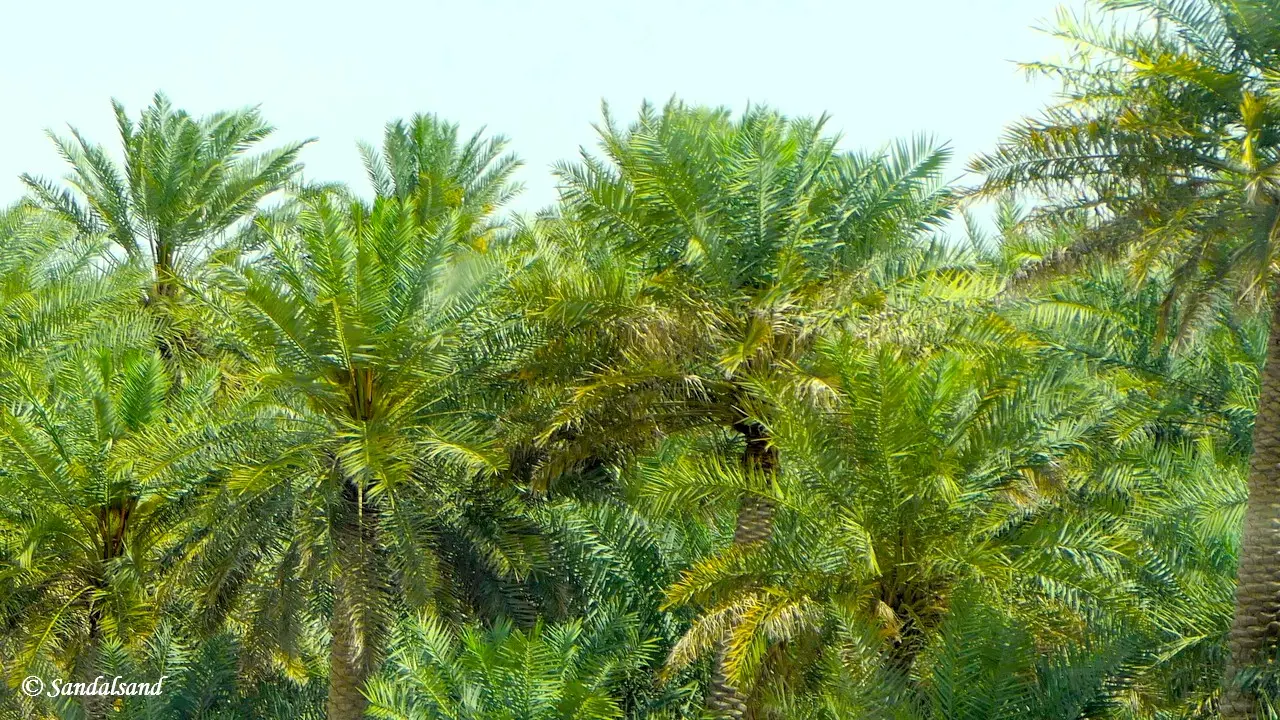
My visit
I came here in 2024 and found the Al-Ahsa Oasis World Heritage site quite appealing in several ways. As part of a group I was not able to visit all twelve sites in and around Al Hofuf, the main town in the area. We went to three of them.
Ibrahim palace or Qasr Ibrahim
The palace, constructed in 1556 by the Ottoman governor and renovated in 1801 by a Saudi governor, is a prominent architectural marvel. Spanning 16500 square meters, Ibrahim Palace seamlessly merges Islamic and military architectural elements with traditional styles of Al-Ahsa. Its design showcases Islamic features like semi-circular arches, domes, and a mosque mihrab, alongside a stone minaret inspired by Turkish designs.
The military aspect is evident in the towering structures surrounding the palace, as well as barracks and stables. Built from local materials like mud, straw, palm trunks, and stones, the palace is fortified with a square layout, corner towers, and observation windows for surveillance.
This was a very appealing encounter. We spent a good time walking around inside the large square fortress walls. A number of buildings and structures has been restored and are kept very tidy and well maintained.
Suq al-Qaysariyah
This market area is believed to have been established in 1822. It stands as one of Arabia’s oldest markets, showcasing its rich history within its expansive 7,000 square meters.
In 2001, the souq faced near destruction due to fire. However, a prompt restoration effort was undertaken to preserve its clay-walled splendor. Today, it has over 400 stalls arranged in a maze-like layout. They come complete with numbered aisles to navigate the bustling crowds of vendors and shoppers.
We found this souq to be quite intriguing. Unfortunately, we came here in day-time during the month of Ramadan when all but a very few shops were closed. In addition, it seemed like the entire souq was new, possibly due to the above mentioned fire. One might wonder if it is fair to grant a world heritage status to a seemingly new construction like this one.
Al-Qarah Mountain in the Eastern Oasis
Al-Qarah Mountain is a mesa of 75 metres counting as one of the most important natural sights in the area. After numerous attempts it was registered in the UNESCO World Heritage Center’s list in 2018, after the inclusion of Al-Ahsa Oasis as such. The limestone formation, dating back millions of years, has played a pivotal role in the region’s history, serving as a strategic point of interest for ancient civilizations.
The mountain, or hill, boasts a rich cultural heritage, evidenced by archaeological findings that indicate human habitation dating back to prehistoric times. Moreover, the mountain serves as a sanctuary for biodiversity, providing a habitat for rare plant species and wildlife. Along with the Ibrahim Palace, this was the most interesting visit in Al Hofuf.
There is at the entrance a kind of museum called the Land of Civilizations aimed at showing visitors the history of Saudi Arabia. It has several interesting posters about the culture and customs of the country. Some of the posters came as a surprise: “Tourism impress the world”; “Hospitality impress the world”; “Art impress the world”. I interpret them as signs of the emerging Saudi aspiration to create a tourism industry and attract foreign visitors to the country. I welcome that aspiration. On the other hand the posters seemed more functional to be used in internal kick-offs or rallies among the Saudis themselves.
The most interesting part of this place was the walk we took into the mountain. There was a passageway in between the rocks, with artificially lit walls. At some places the “roof” was open and we had a glimpse of the open blue sky.

